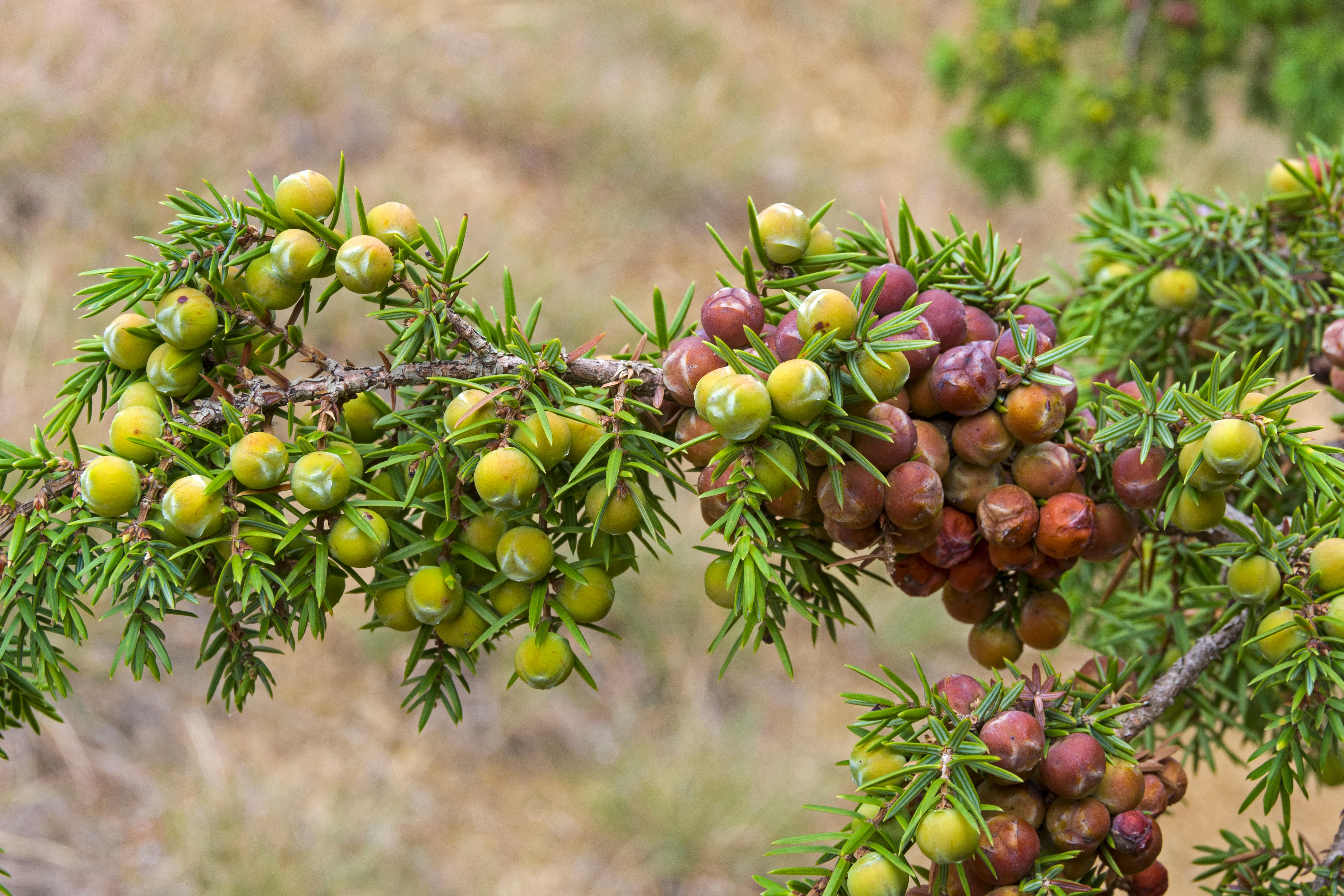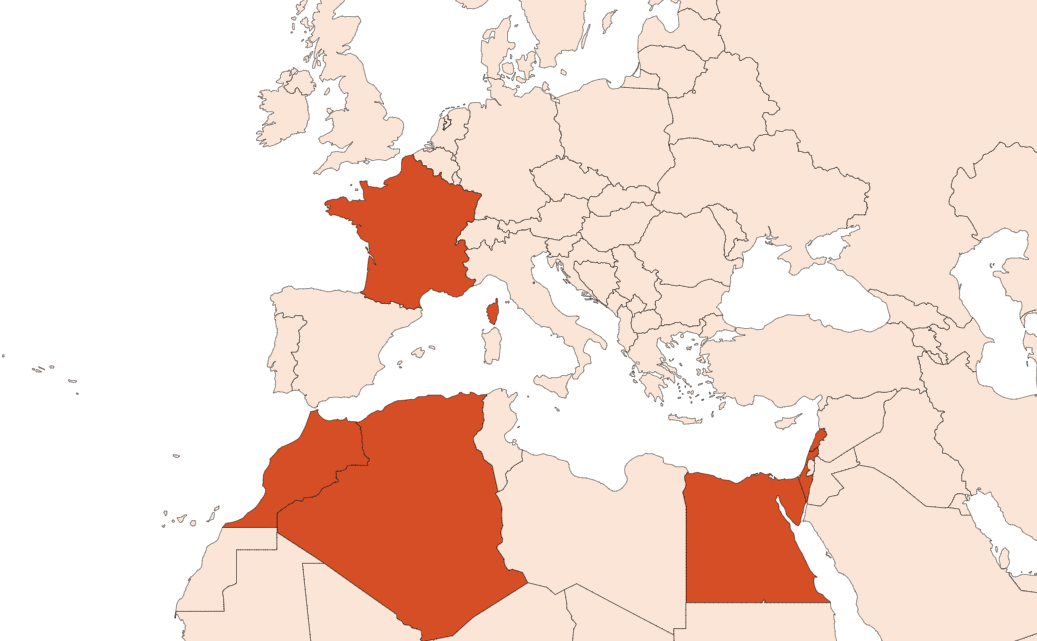Cade EO
Naturelle
Burnt Leather > Burnt > Leather

Crédits photo: ScenTree SAS
Latin name :
Juniperus oxycedrus
Botanical profile :
The cade is a shrub of the Cupressaceae family (such as Cypress and some woods called as ''cedars '' among others) and the genus Juniperus.
Geographic origin :
Originally from the Mediterranean basin, the cade is still cultivated there today, in France as well as in Africa and the Middle East, from Morocco to Iran.
Chemotypes :
Cade juniper is used for its wood, unlike the common juniper (Juniperus communis), used for its berries and branches. Both are among the most cultivated junipers for perfumery.
In addition, other shrubs of the genus Juniperus known as ''cedars '' are grown, such as Juniperus virginiana, or Virginia cedar.
Finally, there are other species of juniper, such as the dwarf juniper (Juniperus alpina), from the Alps and the Corsican montains, cultivated for its branches, the Himalayan juniper (Juniperus indica) or the thuriferous juniper (Juniperus thurifera), among others.
In addition, other shrubs of the genus Juniperus known as ''cedars '' are grown, such as Juniperus virginiana, or Virginia cedar.
Finally, there are other species of juniper, such as the dwarf juniper (Juniperus alpina), from the Alps and the Corsican montains, cultivated for its branches, the Himalayan juniper (Juniperus indica) or the thuriferous juniper (Juniperus thurifera), among others.
Extraction process :
The Cade is a shrub that generally measures 1 to 2 metres in height. It grows in an arid climate, on rocky soils. It is cultivated for its wood, from which an essential oil is obtained all year round. However, the extraction yield is better in summer.
The wood is depressed into logs of about 80cm in diameter, and stored in the open air, in stacks. Before extraction, the wood is shredded into chips and then introduced into the extractor. To obtain the essential oil, the extraction is made with steam, under pressure, for several hours, to obtain the oil at the end of the process by settling over the cade hydrolate.
Another method of extraction, called dry or empyreumatic distillation, consists of pyrolyzing the wood in a furnace at 900 to 1000°C. In this extraction, the fumes are recovered and condensed to get a product called ''Cade Oil ''. This oil contains many molecules called benzopyrenes, that are carcinogenic, and is black in colour. To reduce the benzopyrene level from around 1000 ppm to 10 ppm, a rectification is made. The oil is placed under high vacuum to evaporate only the most volatile compounds, with relatively poor heating (maximum temperature reached at the head of the distillation column: 220°C). Then, the final product is called ''Rectified Cade '', which is light brown in colour and contains few carcinogenic compounds.
Nevertheless, it is nowadays generally the essential oil of cade that is used in perfumery, to avoid any presence of benzopyrene, without altering its smell.
The wood is depressed into logs of about 80cm in diameter, and stored in the open air, in stacks. Before extraction, the wood is shredded into chips and then introduced into the extractor. To obtain the essential oil, the extraction is made with steam, under pressure, for several hours, to obtain the oil at the end of the process by settling over the cade hydrolate.
Another method of extraction, called dry or empyreumatic distillation, consists of pyrolyzing the wood in a furnace at 900 to 1000°C. In this extraction, the fumes are recovered and condensed to get a product called ''Cade Oil ''. This oil contains many molecules called benzopyrenes, that are carcinogenic, and is black in colour. To reduce the benzopyrene level from around 1000 ppm to 10 ppm, a rectification is made. The oil is placed under high vacuum to evaporate only the most volatile compounds, with relatively poor heating (maximum temperature reached at the head of the distillation column: 220°C). Then, the final product is called ''Rectified Cade '', which is light brown in colour and contains few carcinogenic compounds.
Nevertheless, it is nowadays generally the essential oil of cade that is used in perfumery, to avoid any presence of benzopyrene, without altering its smell.
Major Components :
Manoyl Oxide (5-25%)
Alpha-Pinene (7-12%)
Alpha-Cedrol (2-10%)
Widdrene (2-6%)
Alpha-Murrolene (4-5%)
trans-Verbenol (1-5%)
Germacrene-D (3-4%)
Alpha-Pinene (7-12%)
Alpha-Cedrol (2-10%)
Widdrene (2-6%)
Alpha-Murrolene (4-5%)
trans-Verbenol (1-5%)
Germacrene-D (3-4%)
- Uses in perfumery :
- Cade essential oil is used in leather and woody notes, in animalic and oud notes, and in leather and woody perfumes, for the contribution of a burnt and strong note.
- Other comments :
- The Cade is also called Cade Juniper (because it belongs to the genus of junipers) or Spanish Cedar. Its berries are not used in perfumery and are of very little interest, except for the production of certain gin.
In the traditional empyreumatic process of extraction, a cade powder is recovered from the oven, and can be used as a natural incense, as a bactericide. - Volatility :
- Base
- Appearance :
- Brown liquid
- Stability :
- Terpenes found in the oil may polymerize under the effect of high oxydation.
- Price Range :
- €€€
- Aromatherapy :
Informations provided below are taken from reference works in aromatherapy. They are given for information purposes only and can not constitute medical information, nor engage the responsibility of ScenTree.
Cade wood essential oil is used among other things as an anti-inflammatory and for its anti-proliferative properties, especially in the case of psoriasis.

Crédits photo: ScenTree SAS
- EINECS number :
- 289-969-0
- FEMA number :
- Donnée indisponible.
- Allergens :
- This ingredient does not contain any allergen.
- IFRA :
- This ingredient is not restricted
To learn more about IFRA's standards : https://ifrafragrance.org/safe-use/library
ScenTree is solely responsible for the information provided here.

